
Archives

Archive for June, 2010 | ||||||||||||||||||||||||||||||||||||||||||||||||||||||||||||||||||||
Model ResurrectionPosted on June 2, 2010 | Click for larger imagesTry as we may to no longer build some of our older models, ocassionally we get requests for models that have long since been discontinued. Though we feel that our current line up of guitars is stronger than ever and is most representative of what Hamer has developed into, we've been doing our best to honor your discontinued model requests. Sometimes it's just a matter of changing aesthetics, such as inlaying the fingerboard with mother of pearl crowns or spraying an old color. Other times it's far more complex and involves building a guitar from the wood up. For much of Hamer's history we did not document our guitars with computer aided design. Even our hand drawn blueprints were somewhat sketchy. As a result, we decided to retain models of many of the historical guitar bodies. Using these rough prototypes we are able to recreate an accurate reproduction of the original design.
| We thought that you might get a kick out of seeing some of these older models. Here we're showing off guitars from the 1980s. We'll leave it up to you to try to determine the original specifications. First offered in 1977, the Hamer Sunburst double cutaway guitars provided the basis for a whole stable of new models. In 1980 we introduced the Hamer Prototype. Four years later we added a single coil neck pickup and had the Proto II, shown right. 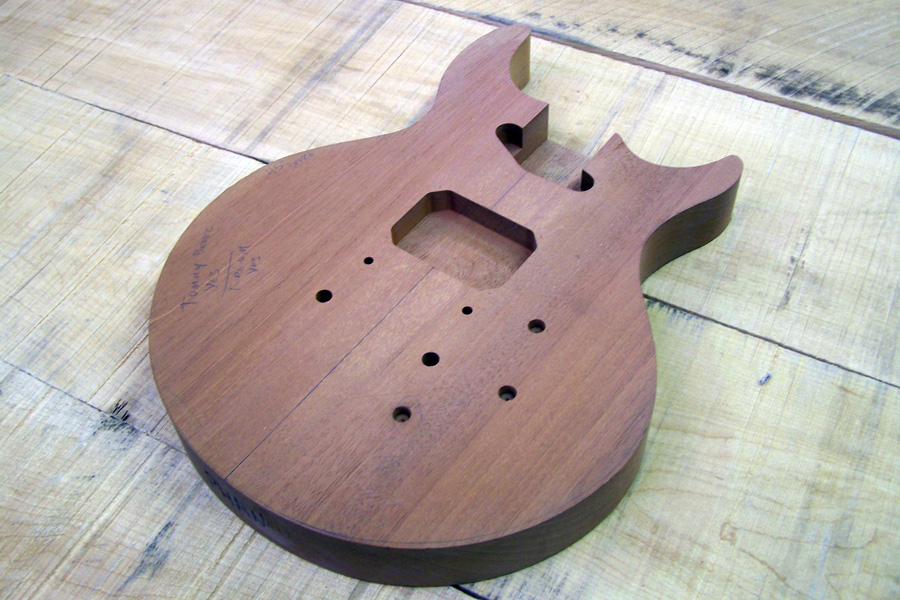
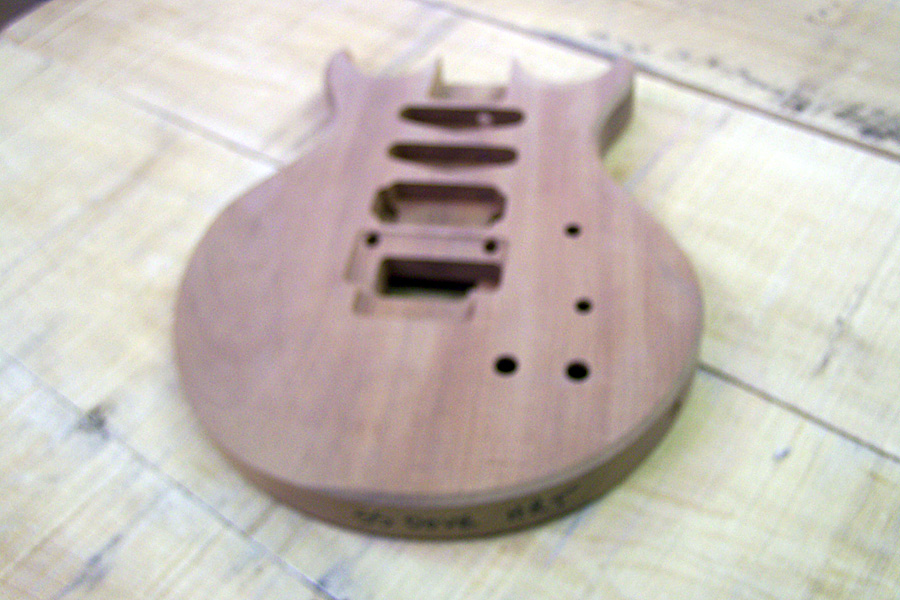
Originally dubbed the Proto SS, the Steve Stevens model was an outgrowth of the original Protoype. 
Naturally we had to follow up the Steve Stevens with the SSII.  The oringal Phantom came out in 1982. The Phantom A7 was fitted with a Roland G700 synth unit and is most closely associated with Andy Summers, who was integral to its development.  The 1984 Scarab guitar was a play on the design of the Hamer Standard. This Scarab I is routed for a Kahler tremolo. 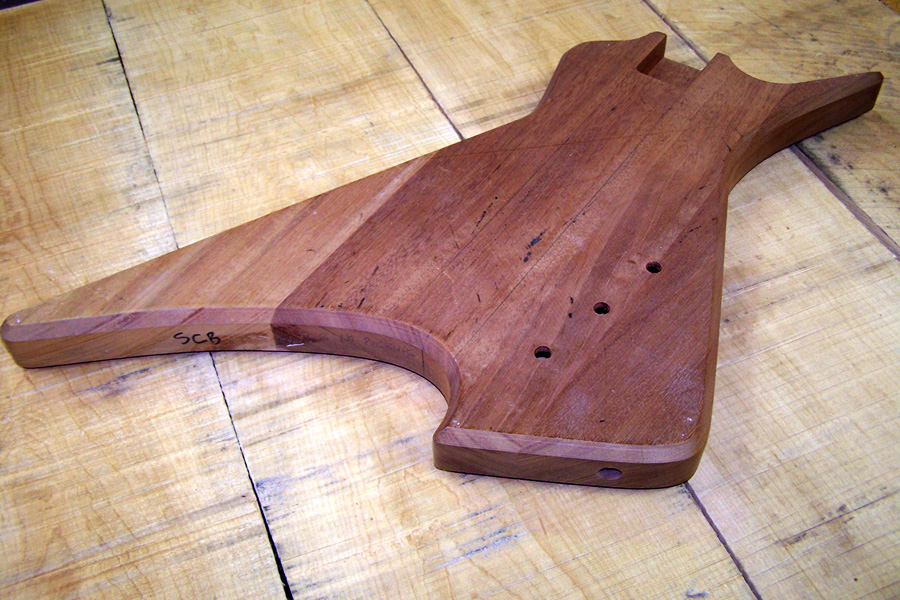 Rick Savage fans will recognize the Scarab Bass, which came out a year after the orginal Scarab. 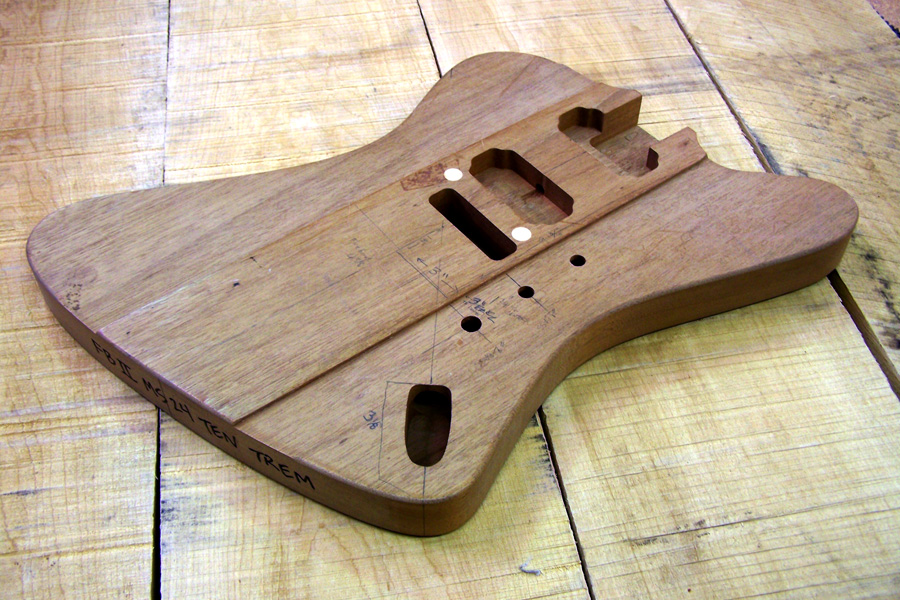 The 1986 FBII had a raised center piece, though it was a set neck design. 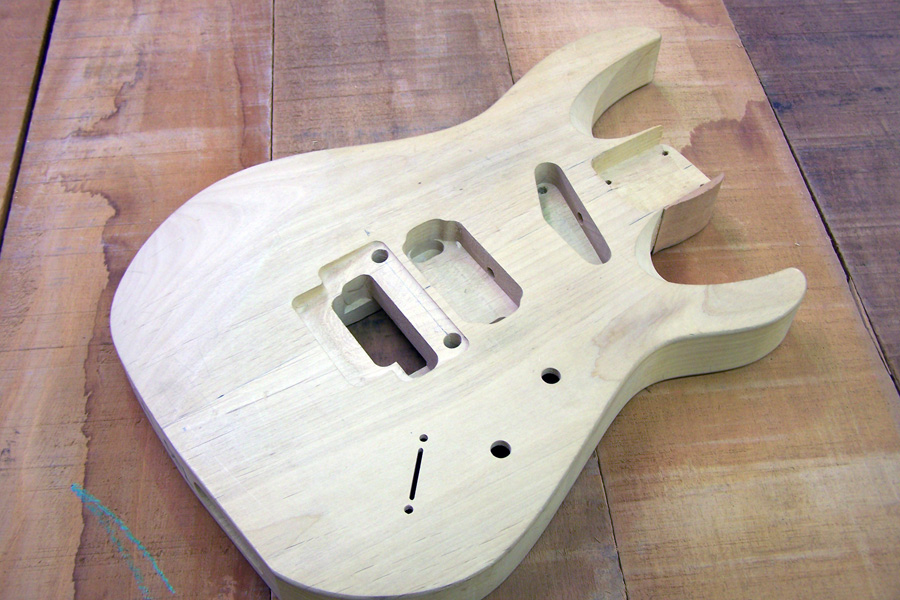 Here's a Californian Deluxe body, which was introduced after the original 1988 Californian. Note the alder wood. 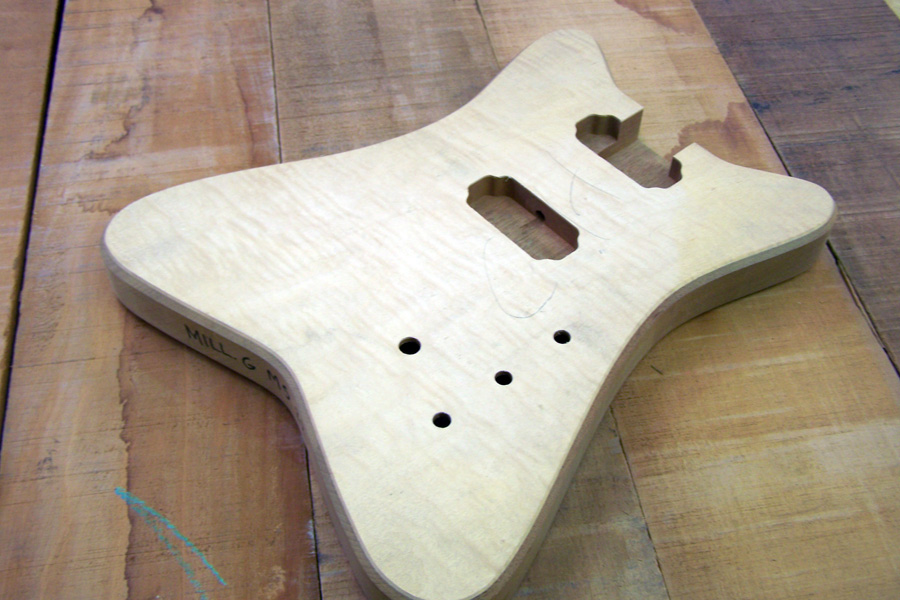 We ran a series of guitars for the Miller Brewing Company in the mid 1980s; we're not planning on resurrecting this model any time soon.
| Kal David: The Blue GuitarPosted on June 10, 2010This week our good friend and blues guitarist extraordinaire Kal David was playing a sold out show at Infinity Hall in Norfolk, Connecticut. Infinity is owned by a close friend of ours and is the premier area venue. A few days later Kal paid a visit to the shop. Like Hamer Guitars, Kal originally hails from Chicago, though he's from the South Side, home of Chicago blues. Kal grew up playing the blues and hasn't turned back. General Manager Frank Untermyer, another Chicago native, greets Kal.
|  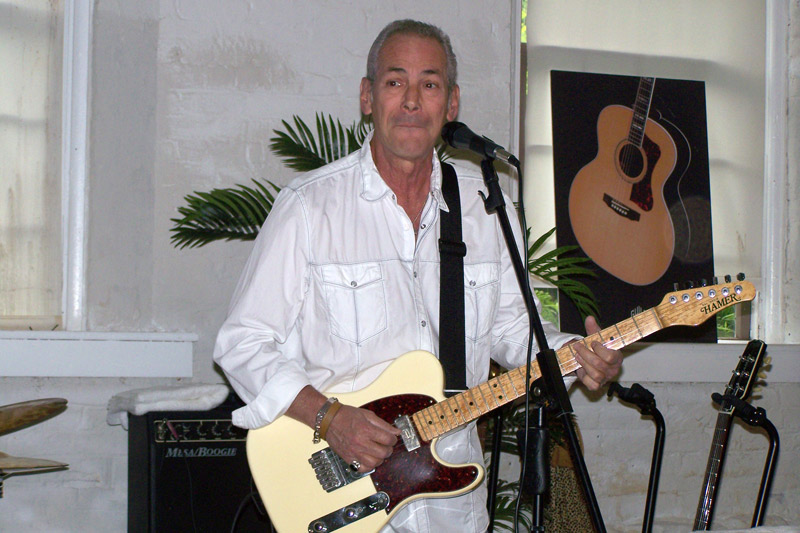  Kal graciously agreed to play a set for the crew. Our own Kim Keller and Allen Richardson accompanied Kal, backing him up on classics like Thrill is Gone and Johnny B Goode. In addition to his long solo career, among many other gigs Kal played with the Illinois Speed Press. He later joined John Mayall and the Blues Breakers, picking up where Mick Taylor left off. Many Hamer afficianados know Kim Keller, if not face to face then over the phone or through e-mail. Kim has been the Hamer Customer Service Manager since 1996, ushering through repairs large and small and giving our customers the time and respect that they deserve. Kim has also been integral to the various open houses that we have sponsored. Kim continues to play his laser pearl CruiseBass. Perhaps less known to Hamer players is Allen Richardson, who started in 2000, working in our mill area. Allen even surprised some of our own team with his drumming skills. He's been playing since 1974, with his first kit being a 1960 Gretsch 4-piece in black pearl. We thought that he'd feel right at home behind this newer piano black Gretsch U.S.A. custom set. Al has studied with jazz drum greats such as Thierry Arpino (Jean Luc Ponty, Daniel Mille and many others). Locally, he played with Apricot Brandy and Whisky River.  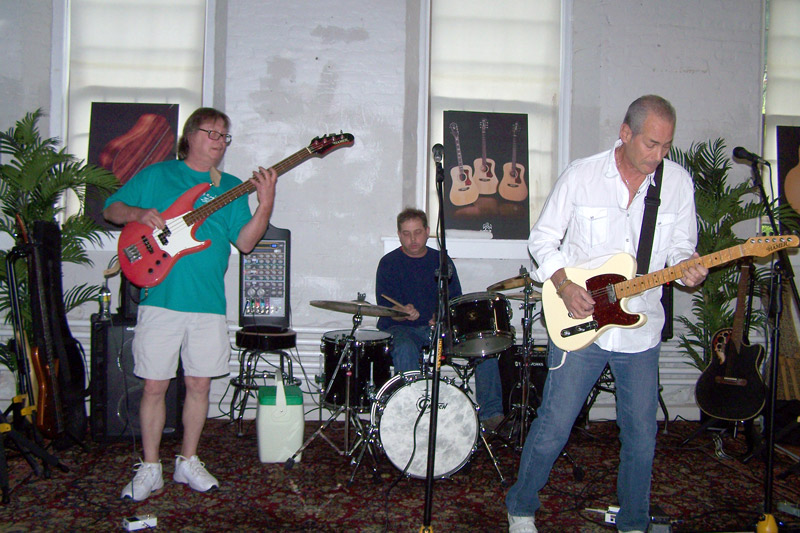 Seeking a more inspiring environment, and no doubt tiring of Chicago winters, Kal relocated to Palm Springs California, where he continues to reside with his long time partner Lauri Bono. You can check out Lauri's bluesy voice on songs like Another Blue Monday and Shadow Across The Land, which she co-wrote with Kal.  A surprise guest was Bill Kaman, former president of Kaman Music Corp. It was under Bill's leadership that Hamer Guitars was acquired by KMC in 1988. Here, Bill is standing in with an Adamas guitar. 
Kal is a long time Firebird fan. In 1996, when we set out to build Kal his first Hamer, he was looking for a T-51. He asked us if we could add a Duncan Firebird pickup in the neck position. Naturally, we obliged. 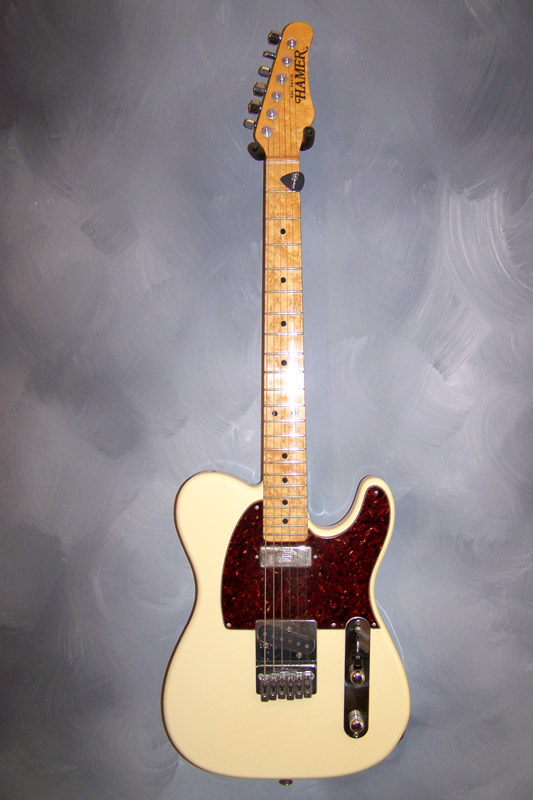 Here's a closer look.
This T-51 has a gorgeous, and well played, bird's-eye maple neck. Kal's a soulful individual who brings joy to those who he touches. We know that our crew experienced that joy when he touched them with his music. It's performances like these that keep us in touch with our musical roots. 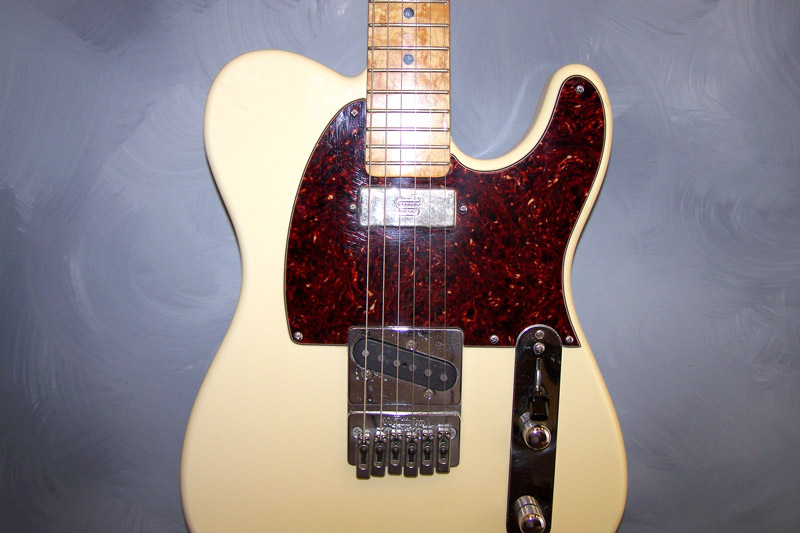   What's in a Name: Artist UltimatePosted on June 16, 2010Be it a custom instrument or a catalogued model, Hamer only builds guitars to order. Often, Hamer orders are custom in nature but just as often they are not. The Artist Ultimate falls somewhere in between. It is at once a stock model while at the same time one of the most difficult and complex Hamer guitars to build. Shortly after relocating to New Hartford, Connecticut we decided to pull out all of the stops and introduce the Artist Ultimate. The first Ultimate was completed on September 16, 1997 and was finished in Cherry Transparent. The second was completed three days later and sprayed in Cognac, which has become the signature color for the Artist Ultimate. The third prototype of this model, again in a Cognac finish, was completed on January 23, 1998. On April 7, 1998, we instituted a consecutive serial numbering system for the Artist Ultimates. The guitar that we are featuring today is #66 in the Artist Ultimate numbering system. All Artist Ultimates feature an Ultimate, or AAAA, figured maple top. The customer for this guitar requested quilted maple. The first step is to select an Ultimate grade billet, bookmatch it and lay a template over it to insure that there will be high quality figure throughout the top. We carve the underside of the guitar top to the same arch as we will later carve the top of the guitar itself. This results in a constant f-hole thickness dimension.  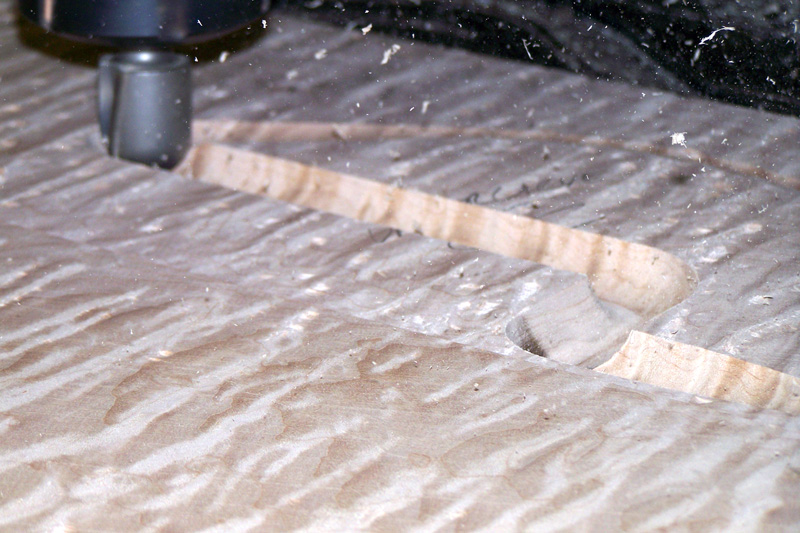 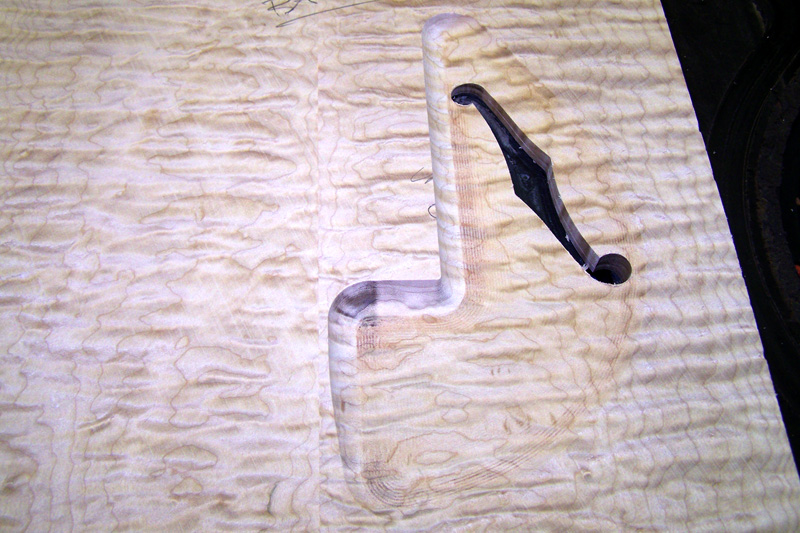 The f-hole is now ready for binding. 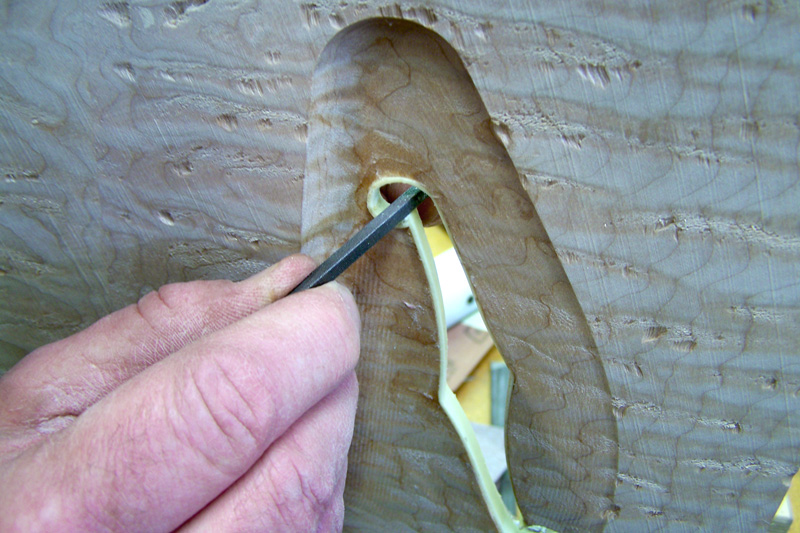 The f-hole is hand bound prior to bonding the figured maple top to the mahogany back.  After it's bound, we hand sand the undercarve, removing any mill marks and bringing the binding flush to the underside of the guitar top.  Because we inlay mother of pearl purfling around the fingerboard, we have to hand rout fret slots through the pearl itself. This is what the pearl purfling looks like prior to fretting. After fretting the fingerboard we will fit the celluloid binding to the neck. By following this process we do not need to notch the frets, which results in a better mechanical grip. What this translates into for the player is uniformly seated frets with very little crowning, or filing, to the frets.  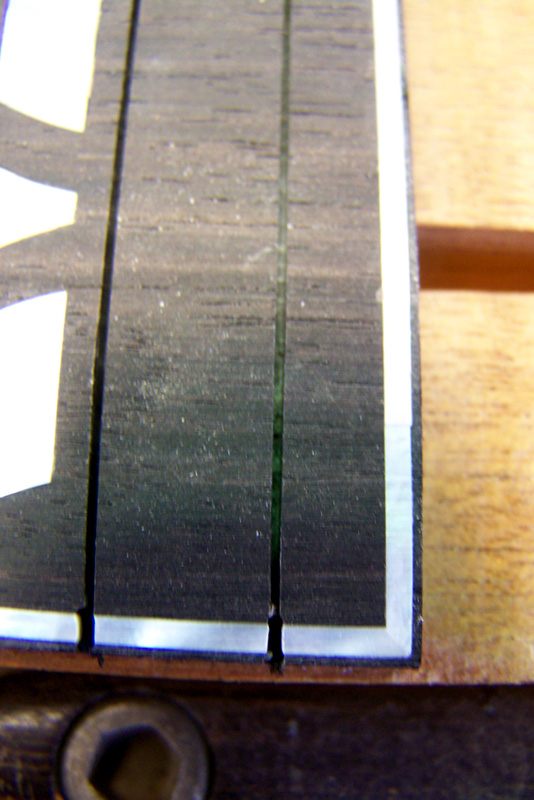 We match the miter joints of the pearl with those of the celluloid binding.  In the peghead area we inlay a small ebony truss rod spline to match the ebony peghead overlay, just one more of the many details that we care about at Hamer. The neck is going to sit and stabilize while we continue work on the body. On an Artist Ultimate we hand carve the entire top. We'll show you some of those steps in a future post. 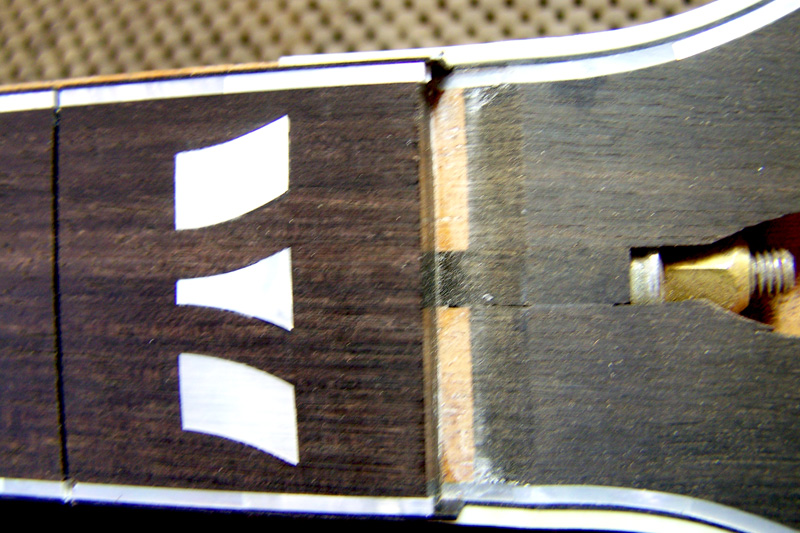
| Come Together...The Two Ultimate Parts Become OnePosted on June 28, 2010
| We last brought you through the completion of the neck for Artist Ultimate #66 but still had much work to do on the body. As with the neck, we use a nylon filler strip when binding the body. We later remove the nylon strip, leaving a channel in which we set the mother of pearl purfling. 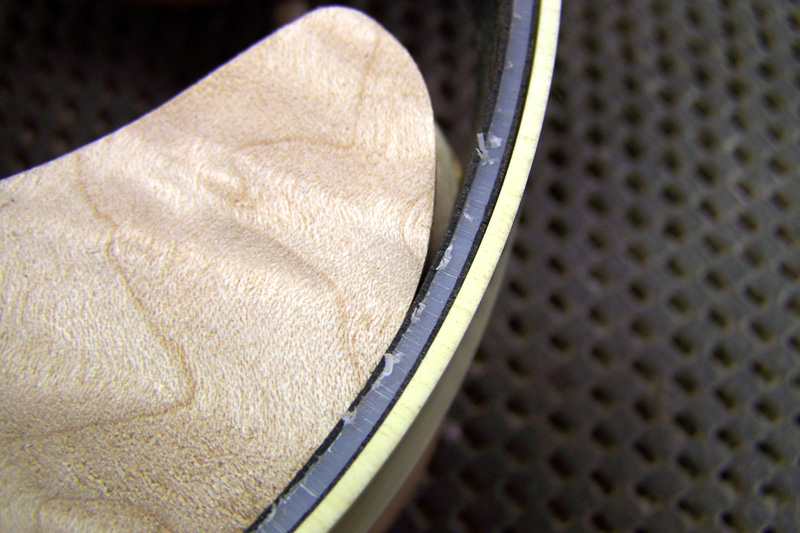 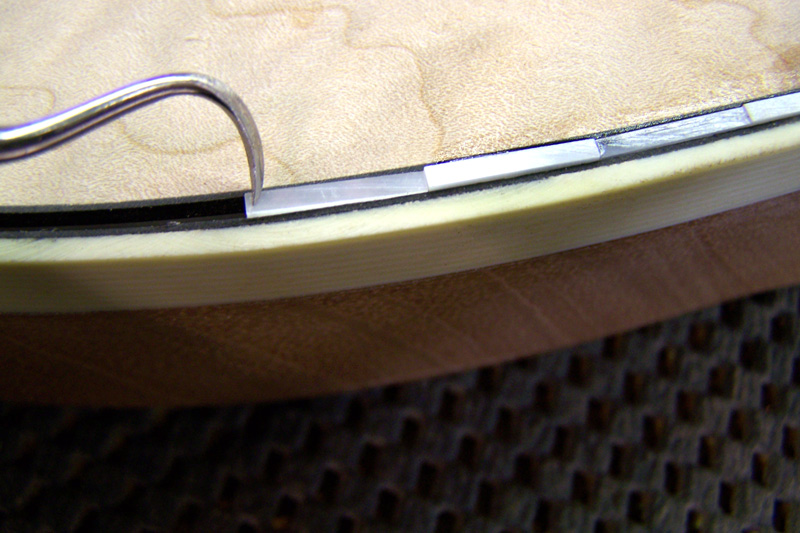 We use precision dentistry tools when inlaying the pearl.  Each piece of pearl is snugly fit against another. We have six different sizes of pearl, each cut to a specific radius for different parts of the body. We then custom cut those pieces to adjust for each individual body. Fitting the pearl around the horns is a painstaking procedure.  We are careful to retain the top "dish" when hand sanding the pearl to the figured maple top. 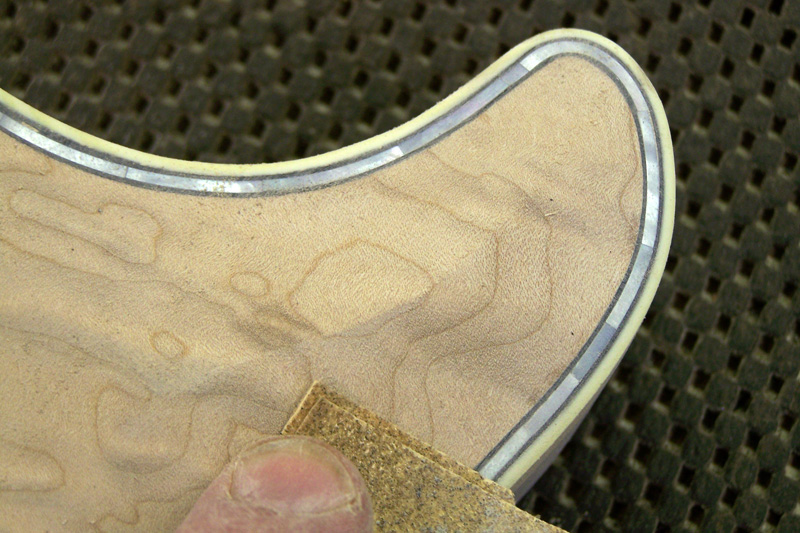 We hand sand to accentuate the peaks on the horns. 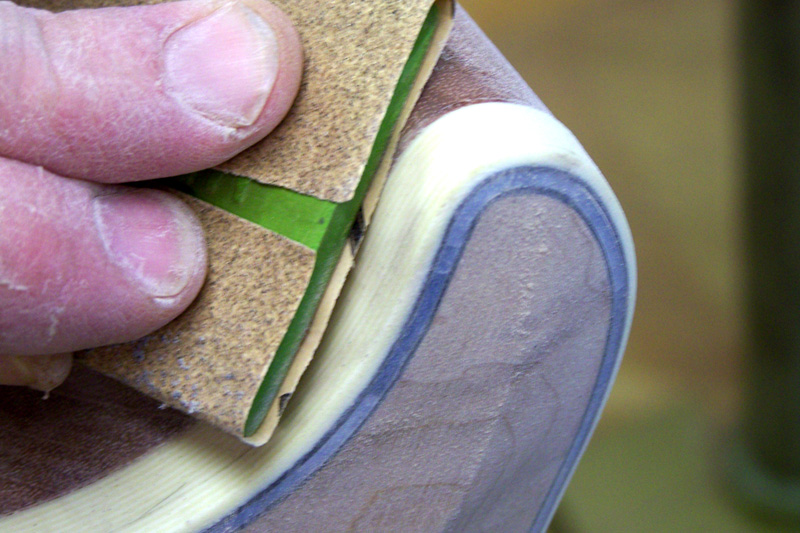 The sides too are hand sanded to be flush with body binding.
The figure on this top is dramatic. 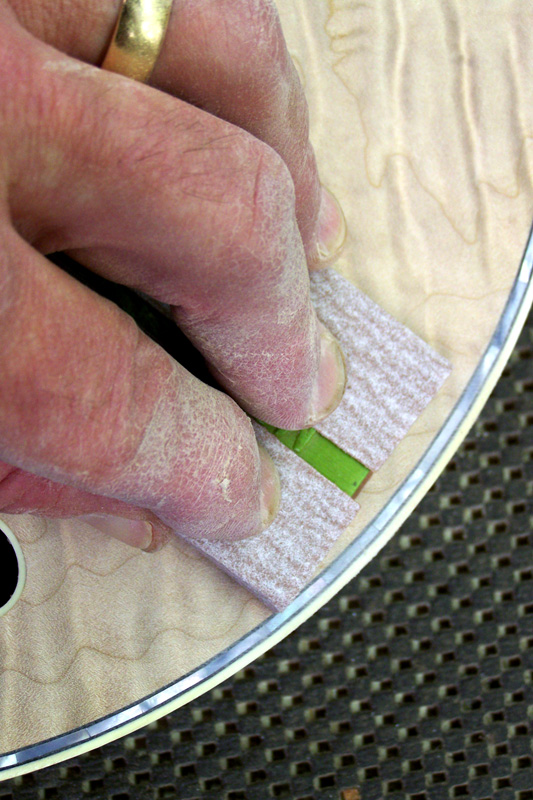   We can't overemphasize the amount of detail work that goes into an Artist Ultimate.  Most builders utilize plastic side position markers. Hamer side dots are made from black mother of pearl.  The fossilized ivory nut is fit in anticipation of the neck being bonded to the body. 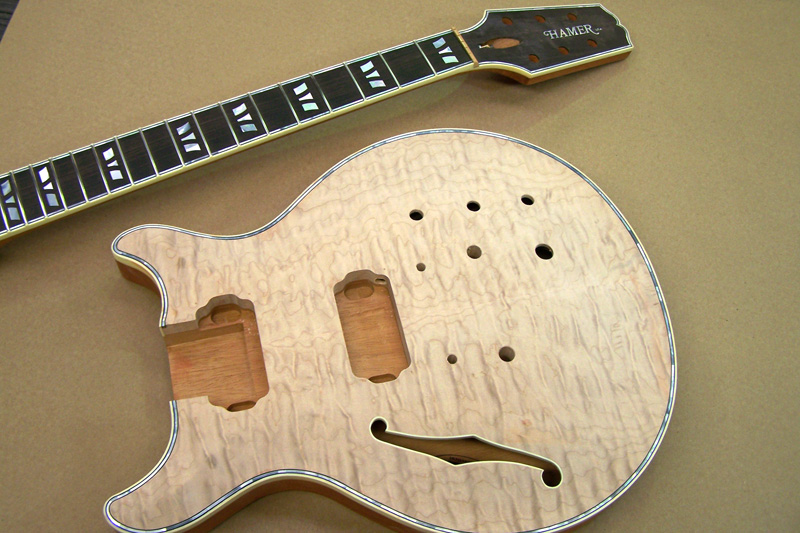 The matched pair is ready to be bonded together. Our massive neck tenon supports the entire fingerboard while insuring unparalleled sound transmission between the body and the neck. After the neck is set, we rout the tenon to the floor of the neck pickup rout.  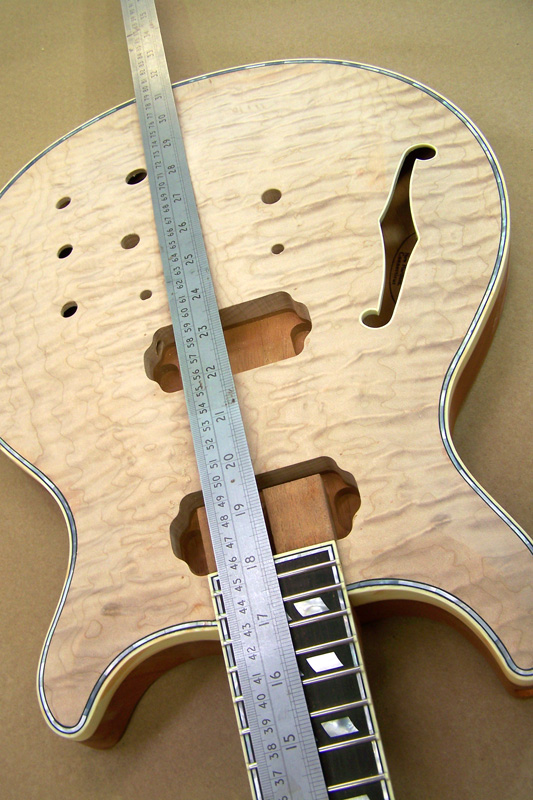 The neck and the body are now one and ready for spray. Each step we take brings the guitar closer to life. 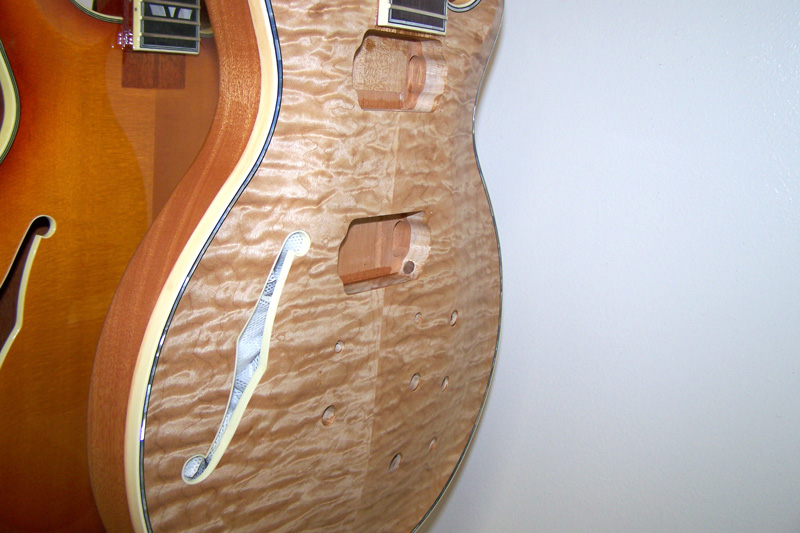 Previous Month
| Next Month
| | ||||||||||||||||||||||||||||||||||||||||||||||||||||||||||||